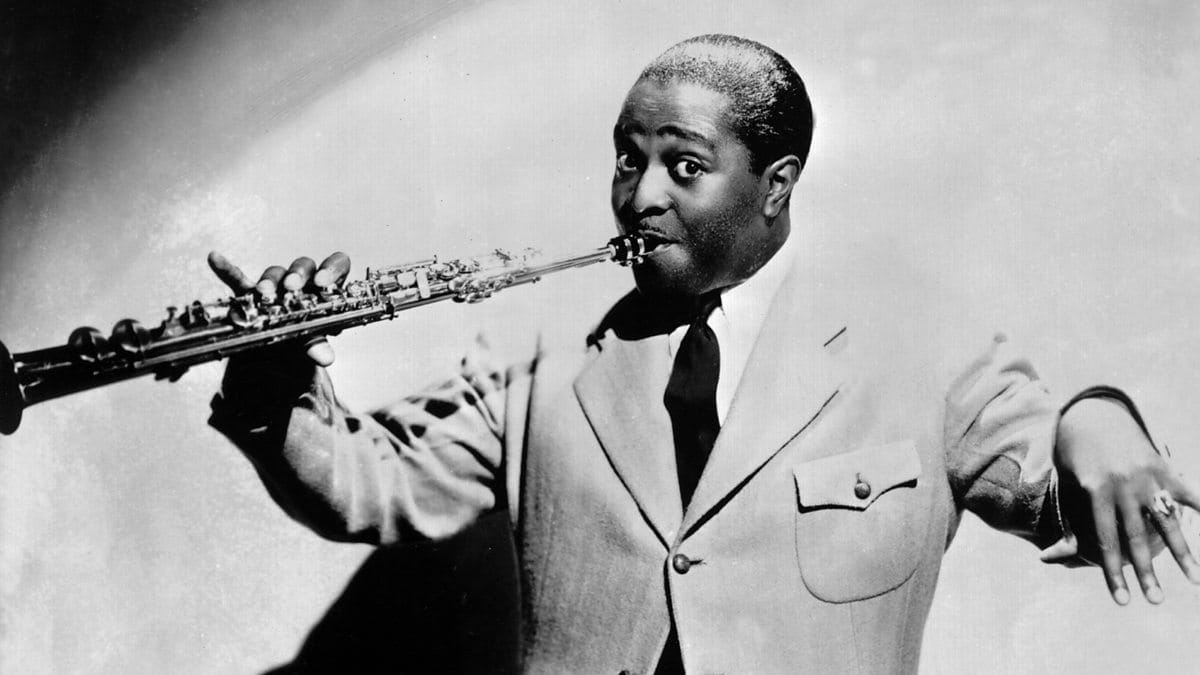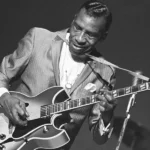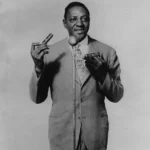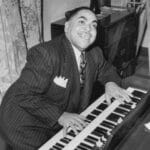Get ready to swing into the incredible story of Louis Jordan, the musical genius crowned the “King of the Jukeboxes.” From his groundbreaking style to his lasting influence on jazz, rhythm and blues, and even rock ‘n’ roll, Jordan left an indelible mark on American music. Let’s dig into the captivating details of his life and music, uncovering the secrets behind his success and exploring the personal anecdotes that shaped his extraordinary legacy.
Facts About Louis Jordan
Louis Jordan, affectionately dubbed the “King of the Jukeboxes,” was a true musical trailblazer. Not only was he a gifted saxophonist and vocalist, but he was also a prolific bandleader, songwriter, and charismatic showman. Jordan effortlessly blended jazz, blues, and boogie-woogie, pioneering a unique sound that would later shape the landscape of rhythm and blues and rock ‘n’ roll.
Leading his renowned band, the Tympany Five, Jordan created music that was both infectious and innovative. Their catchy and often humorous songs resonated deeply with audiences, making them a mainstay on jukeboxes across the nation. Imagine the infectious energy of “Caldonia” and “Choo Choo Ch’Boogie” pouring out of every jukebox – that was the magnitude of Louis Jordan’s impact.
However, Jordan’s legacy extends far beyond catchy tunes. As an African-American artist navigating the turbulent waters of segregation, his success was a monumental achievement. He shattered racial barriers and paved the way for countless musicians to follow. His magnetic stage presence and undeniable charisma became legendary, inspiring generations of performers across genres. Louis Jordan wasn’t just making music; he was making history.
What was Louis Jordan known for?
What catapulted Louis Jordan to such legendary status? To understand his impact, we need to rewind to the 1930s and 40s – a time when the music scene was undergoing a seismic shift. Enter Louis Jordan, armed with a fresh and exhilarating new sound. Jordan was a musical powerhouse, effortlessly juggling singing, saxophone playing, songwriting, and bandleading. He was the ultimate musical multi-tasker!
What emerged from this creative whirlwind was a captivating fusion of jazz, blues, and boogie-woogie that became known as jump blues. Jordan, with his finger on the pulse of innovation, became the undisputed king of this new groove. But Jordan’s musical vision transcended genres and audiences. He was a unifying force, becoming one of the first African-American artists to achieve widespread popularity across racial lines – a groundbreaking accomplishment for the time.
Mention “King of the Jukebox” or picture those vintage jukeboxes, and Louis Jordan’s image instantly springs to mind. His chart-topping hits like “Caldonia” and “Choo Choo Ch’Boogie” weren’t just songs; they were anthems that dominated the airwaves and ignited dance floors.
Jordan’s music possessed a unique and irresistible energy, an infectious rhythm that would go on to influence a wave of genres, including R&B, urban blues, and even the nascent sounds of rock ‘n’ roll. He was also an early adopter of the electric organ, adding another layer of sonic richness to the evolving jump blues sound.
Beyond the recording studio, Jordan was a natural entertainer who lit up the silver screen in a string of musical films, showcasing his comedic timing and undeniable charisma.
Perhaps most importantly, Louis Jordan represented a beacon of hope and inspiration for countless African-American musicians striving for recognition in a segregated industry. He proved that their voices deserved to be heard, that their music had the power to transcend boundaries and move people from all walks of life.
Jordan’s impact on music is undeniable, and his legacy is forever enshrined in the Rock and Roll Hall of Fame and the millions upon millions of records sold worldwide. Louis Jordan didn’t just make music; he made history.
Did Louis Jordan have kids?
Absolutely! Louis Jordan wasn’t just a musical icon; he was a devoted family man. He had a large family, fathering a total of seven children from two marriages. His first marriage to Ida Fields blessed him with four children: Vernon, Louis Jr., Rosalyn, and Kenneth. After his first marriage ended, Jordan found love again with Martha Weaver, and together they had three children: Martha Ann, Betty Lou, and James Clarence.
Despite the demands of his extraordinary musical career, Jordan always prioritized his family. He was committed to providing a stable and loving home for his children, ensuring they felt supported and cherished. It seems that his dedication to family played a significant role in his personal happiness.
Who is the father of R&B music?
Rhythm and Blues, or R&B, exploded onto the scene in the 1940s, shaking things up with its intoxicating blend of blues, jazz, and gospel. This musical cocktail quickly caught fire, particularly among African American youth, becoming the soundtrack of choice for jukeboxes and late-night clubs.
However, crowning a single “father” of R&B is a bit like solving a musical mystery. While numerous talented individuals contributed to its birth, music historians often point to Louis Jordan as a leading figure. Jordan was a true Renaissance man of music, excelling as a saxophonist, singer, songwriter, and bandleader. His band, the Tympany Five, reigned supreme in the 40s and 50s, churning out hits and shaping the nascent R&B sound with each infectious note.
But music is a living, breathing art form, constantly changing and evolving. New discoveries and fresh perspectives continuously reshape its narrative. So while Louis Jordan undeniably deserves a place of honor in the R&B hall of fame, it’s crucial to remember that the genre’s story is vast and multifaceted, with many chapters still being written.
Who played guitar for Louis Jordan?
Let’s shine a spotlight on the man behind those unforgettable guitar riffs that made Louis Jordan’s music so iconic: Carl Hogan. Hogan was a true guitar hero, best known for his legendary riff on “Ain’t That Just Like a Woman (They’ll Do It Every Time).” This riff was so influential that it inspired guitar legends like Chuck Berry, who echoed its brilliance in his iconic track “Johnny B. Goode.”
Louis Jordan, the visionary bandleader, was not just a saxophone virtuoso but a true pioneer who helped shape the sounds of rhythm and blues and rock ‘n’ roll. His “Tympany Five” bands, with their signature “jump blues” style, took the world by storm.
Carl Hogan, a master of jazz and blues guitar, brought his distinctive style to the Tympany Five, leaving an indelible mark on music history. His riff on “Ain’t That Just Like a Woman” became his signature, a testament to his extraordinary talent that continues to inspire guitarists today. Hogan’s legacy is a testament to the enduring power of a single musician’s creativity.
A quick recap:
- Carl Hogan crafted the unforgettable guitar riff on Louis Jordan’s hit “Ain’t That Just Like a Woman.”
- Hogan’s musical influence can be heard in the work of numerous artists, including the legendary Chuck Berry.
- Louis Jordan and his “Tympany Five” bands weren’t just musicians; they were architects of rhythm and blues, urban blues, and those early rock ‘n’ roll vibes.
- Carl Hogan’s musical legacy stands as a testament to his remarkable talent and the profound impact he had on the world of music.
What type of saxophone did Louis Jordan play?
Louis Jordan was a musical chameleon, but when it came to saxophones, the alto was his soulmate. While he dabbled in piano and clarinet and could handle other saxophones, the alto was his true musical companion. This versatility was key to his unique sound and solidified his place in jazz history.
Playing different saxophones allowed Jordan to effortlessly navigate various styles, adding depth and complexity to his innovative jump blues sound. Imagine him on stage, transitioning seamlessly between saxophones, creating captivating and dynamic arrangements that left audiences spellbound.
When Jordan picked up his alto sax, magic happened. His solos were fluid, swinging, and brimming with technical brilliance. He blended jazz, blues, and boogie-woogie elements with an ease that was both mesmerizing and groundbreaking. This unique fusion went on to influence a wide array of genres, from R&B to rock ‘n’ roll.
While the alto sax was his undisputed favorite, pinpointing every single saxophone Jordan played is a bit of a musical treasure hunt. We have glimpses and suggestions, but the exact details remain shrouded in a bit of mystery, adding to his legendary aura.
Here’s what we know for sure:
- Louis Jordan’s primary instrument was the alto saxophone.
- He was also proficient in playing other types of saxophones.
- His ability to play multiple instruments was instrumental in shaping his signature sound.
- Jordan’s alto sax playing was renowned for its fluidity, swing, and technical mastery.
- His musical versatility continues to inspire artists across genres.
Who were the first rock and roll artists?
Identifying the very first rock and roll artists is a bit like tracing a river back to its source. Music, much like a river, doesn’t emerge from a single point; it flows from various sources, converging and diverging along the way.
However, in the 1940s and 50s, the musical landscape bubbled with creative energy. Rhythm and blues, gospel, and country were blending and intertwining, giving birth to a new and electrifying sound – rock and roll. While the term “rock and roll” didn’t fully take hold until the early 50s, several artists were already making waves, laying the groundwork for a musical revolution.
Chuck Berry was a true original. With his legendary guitar skills, relatable storytelling, and electrifying stage presence, he embodied the spirit of rock and roll. Songs like “Maybellene” and “Johnny B. Goode” transcended mere entertainment, becoming anthems for a generation coming of age.
Then there was Elvis Presley, the undisputed “King of Rock and Roll.” Elvis masterfully combined rhythm and blues, gospel, and country into a unique and irresistible sound. His charisma and those iconic dance moves propelled him to superstardom. With hits like “Hound Dog” and “Jailhouse Rock,” Elvis wasn’t just making music; he was defining what it meant to be a rock and roll icon.
Little Richard brought the house down with his explosive energy and flamboyant style. Songs like “Tutti Frutti” and “Long Tall Sally” were bursting with infectious rhythms and unstoppable beats. Little Richard’s influence can be heard in the music of countless rock and roll artists who followed in his footsteps.
Buddy Holly, on the other hand, brought a touch of sweetness to the genre. His music, while infused with that signature rock energy, possessed a melodic charm that set it apart. Songs like “That’ll Be the Day” and “Peggy Sue” showcased his gift for relatable lyrics and his unique vocal style. Buddy Holly’s influence can be felt in the development of genres like pop rock and power pop.
These four musicians consistently top the list when discussing the pioneers of rock and roll. Their distinctive styles and groundbreaking contributions shaped the sound and direction of the genre, leaving an indelible mark on music history.
Of course, pinpointing the absolute first rock and roll artists remains a point of musical debate. The genre’s origins are a rich tapestry of influences and innovations. But one thing is certain: Chuck Berry, Elvis Presley, Little Richard, and Buddy Holly weren’t just part of the rock and roll story; they were the story.
For more fascinating insights on the world of sports and entertainment, check out these links:
- Discover intriguing details about Japanese mixed martial artist Takanori Gomi at facts about takanori gomi.
- Delve into the life of Portuguese football legend Paulo Futre and uncover fascinating information at facts about paulo futre.
- Unlock Elemental 2 Secrets: Actionable Insights Now - April 2, 2025
- Lot’s Wife’s Name: Unveiling the Mystery of Sodom’s Fall - April 2, 2025
- Photocell Sensors: A Complete Guide for Selection and Implementation - April 2, 2025

















1 thought on “Unveiling the King: Fascinating Facts about Louis Jordan’s Life and Music”
Comments are closed.